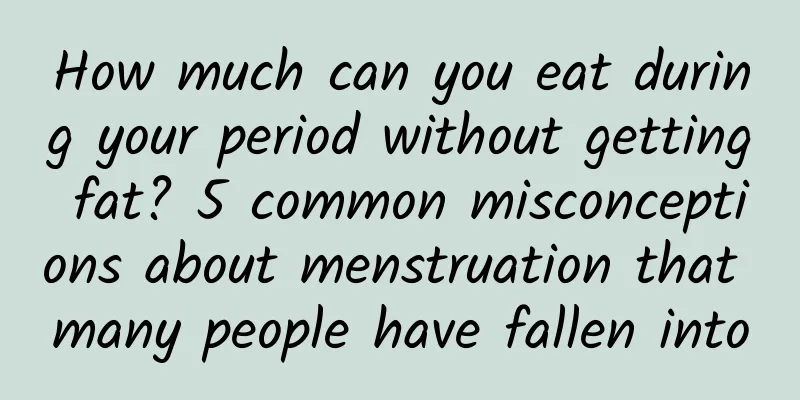Women's pain is very serious

|
PAIN1 Acute abdominal pain At 5 o'clock in the morning, Mia felt the urge to urinate, so she got up quickly to go to the toilet. However, the moment she stood up after defecation, she suddenly felt a severe abdominal pain that made her unable to straighten her back. Acute appendicitis? Not necessarily! Warning 1: Corpus luteum rupture Corpus luteum rupture is a common cause of acute abdominal pain in women. The pain manifests as sudden tearing abdominal pain, which turns into persistent heavy pain after a short time. In mild cases, the pain gradually subsides, while in severe cases, the pain gradually increases and is accompanied by intra-abdominal bleeding. Under normal circumstances, women will ovulate around the 14th day of menstruation. If the ovulated follicle does not encounter sperm at this time, it will turn into a corpus luteum and then gradually wither in the abdominal cavity. However, during this period, if the abdominal cavity is strongly stimulated and impacted, some people may experience corpus luteum rupture, bleeding, and acute abdominal pain. Along with the abdominal pain, there may also be symptoms such as a feeling of anal prolapse, the urge to defecate, palpitations, sweating, dizziness, and pale complexion. Warning 2: Ovarian cyst torsion That night, Mia was rushed to the hospital by her husband. The doctor touched the "source" of the pain in Mia's abdomen, a smooth and movable mass, and diagnosed it as ovarian cyst torsion. After an ovarian cyst torsions, the cyst suffers from circulatory disorders, necrosis, and bloody exudation, causing abdominal inflammation, which is clinically similar to acute appendicitis, but the pain of ovarian cyst torsion is mostly paroxysmal colic. The occurrence of this disease is often related to the sudden change of the patient's body position. Mia was caused by the sudden change of getting up from the bed to go to the toilet because she had to urinate urgently. Warning 3: Rupture of ectopic pregnancy After an ectopic pregnancy ruptures, intra-abdominal bleeding irritates the lower abdominal wall peritoneum, which may lead to clinical features of acute appendicitis. However, the pain caused by ectopic pregnancy rupture is acute and severe abdominal pain, which starts on one side and quickly spreads to the entire abdomen, accompanied by symptoms such as nausea, vomiting, anal distension, and diarrhea. Ectopic pregnancy often has a history of amenorrhea and early pregnancy, which is the key to diagnosis, and there are complications such as vaginal bleeding. Warning 4: Acute adnexitis Acute adnexitis can cause symptoms similar to acute appendicitis. Although there is lower abdominal pain, there is no typical metastasis. The abdominal tenderness is located lower, almost close to the pubic bone. There are also symptoms such as excessive vaginal discharge that is yellow or pus-like and has a foul odor, and obvious tenderness on both sides of the uterus. Warning 5: Unexpected miscarriage Sudden severe lower abdominal pain and vaginal bleeding during pregnancy may be a hidden warning sign of miscarriage. The pain of threatened abortion in the early stage is manifested as mild abdominal pain and a small amount of vaginal bleeding, which can easily be mistaken for menstruation. Your history of amenorrhea and early pregnancy reactions should be your criteria for judgment. PAlN2 Breast While you are paying attention to whether your breasts are full, you must not ignore the pain that appears from time to time. Breast pain is mostly manifested as dull distension and pain. It is usually not as intense and sudden as abdominal pain, so it is easy to be ignored and let it go. In fact, there are often dangers hidden behind this "gentleness". Breast pain means breast cancer? Wrong! In fact, 80% of women with breast pain suffer from breast hyperplasia or mastitis. Breast cancer is rarely diagnosed through pain. It is usually diagnosed by touching the breast and finding a lump and then seeing a doctor. Warning 1: Breast hyperplasia The pain intensity of breast hyperplasia changes regularly with the menstrual cycle: it gets worse before menstruation and gets better after menstruation. Other symptoms include breast lumps, and the size of the lumps may change cyclically with menstruation. The lumps of breast hyperplasia are distributed in flakes, blocks or granules, of different sizes, with good mobility and no adhesion to surrounding tissues. In contrast, malignant breast tumors often show progressive growth, unclear boundaries, poor mobility, and obvious adhesion to surrounding tissues. Warning 2: Mastitis Mastitis is common after childbirth, and is especially likely to occur during the postpartum period. Severe breast pain, accompanied by breast redness, swelling, obvious tenderness, fever and other inflammatory symptoms. Special reminder: If you have armpit pain, you should consider the possibility of breast cancer In the early stages of breast cancer, its symptoms are often not obvious. However, due to the distribution of blood and lymph in the breast, the breast and axillary tissue are closely connected. The axillary area often becomes the first target of breast cancer metastasis. Therefore, if you have armpit pain, you should consider the possibility of breast cancer. In addition, there are characteristic changes in the early stages of breast cancer, such as discharge from the nipple, inverted nipple, and breast tumors. The surface of the tumor is uneven, with unclear boundaries with surrounding tissues, breast skin changes (such as orange peel-like changes) and pigmentation, etc. PAIN3 Chronic abdominal pain Compared with acute abdominal pain, chronic abdominal pain often hides greater dangers for women. Because they seem to be there and not there, they are easy to be overlooked by you. Just a bad stomach, chronic gastritis? Wrong! In fact, there are many reasons that can cause women to experience chronic abdominal pain, such as endometriosis, chronic adnexitis, and chronic pelvic inflammatory disease that is not treated in time, among which chronic pelvic inflammatory disease is the most common cause. Warning: Chronic Pelvic Inflammatory Disease The pain of chronic pelvic inflammatory disease is manifested as intermittent chronic abdominal pain, mainly dull pain in the lower abdomen and sacral pain. Its systemic symptoms are not obvious, but may include paroxysmal low-grade fever, chills, fatigue or neurasthenia. The pain has the following characteristics: chronic dull pain in the lower abdomen, increased yellow leucorrhea, long-term low back pain and a feeling of heaviness in the lower abdomen (not related to the menstrual cycle). |
<<: 8 little-known secrets of women's vagina
>>: Does painless abortion hurt?
Recommend
The best treatment for vaginal candidiasis
Candidal vaginitis is not only a very harmful dis...
Four "characteristics" of cancer constitution: I hope you don't have any of them
Cancer, the word always causes panic and anxiety ...
What are the reasons for early menstruation?
Menstruation is a physiological characteristic of...
Best time to test progesterone during pregnancy
Pregnancy is a process that women must go through...
Treatment for delayed menstruation for ten days
A ten-day delay in menstruation has brought confu...
Why does transaminase increase when taking statins? Is it harmful to the body?
If the transaminase level is elevated, can I stil...
What are the causes of ovarian cysts?
There are many diseases that may occur in women&#...
What is the reason for the light green vaginal discharge?
Because women have a more complex physiological s...
Will having sex every day cause gynecological inflammation?
Moderate sexual life is good for the health of bo...
Which moles on a woman's face must be removed
I believe that everyone is familiar with moles. E...
What causes kidney acid swelling in women?
I believe everyone knows that generally speaking,...
What nutrients does pineapple contain? Can I put the unfinished pineapple in the refrigerator?
The scientific name of pineapple is Ananas, which...
Why do I have more vaginal discharge on a few days each month?
Many women do not know what normal leucorrhea is,...
Do you have a sensitive nose in the fall? Let’s take a look at the climate diseases that occur during the season change!
Right now, as the summer and autumn seasons chang...









